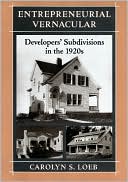Category Books
- Fiction Books & Literature
- Graphic Novels
- Horror
- Mystery & Crime
- Poetry
- Romance Books
- Science Fiction & Fantasy
- Thrillers
- Westerns
- Ages 0-2
- Ages 3-5
- Ages 6-8
- Ages 9-12
- Teens
- Children's Books
- African Americans
- Antiques & Collectibles
- Art, Architecture & Photography
- Bibles & Bible Studies
- Biography
- Business Books
- Christianity
- Computer Books & Technology Books
- Cookbooks, Food & Wine
- Crafts & Hobbies Books
- Education & Teaching
- Engineering
- Entertainment
- Foreign Languages
- Game Books
- Gay & Lesbian
- Health Books, Diet & Fitness Books
- History
- Home & Garden
- Humor Books
- Judaism & Judaica
- Law
- Medical Books
- New Age & Spirituality
- Nonfiction
- Parenting & Family
- Pets
- Philosophy
- Political Books & Current Events Books
- Psychology & Psychotherapy
- Reference
- Religion Books
- Science & Nature
- Self Improvement
- Sex & Relationships
- Social Sciences
- Sports & Adventure
- Study Guides & Test Prep
- Travel
- True Crime
- Weddings
- Women's Studies
Entrepreneurial Vernacular: Developers' Subdivisions in the 1920s » (New Edition)

Authors: Carolyn S. Loeb
ISBN-13: 9780801866180, ISBN-10: 0801866189
Format: Hardcover
Publisher: Johns Hopkins University Press
Date Published: August 2001
Edition: New Edition
Author Biography: Carolyn S. Loeb
Carolyn S. Loeb is an associate professor of art history at Central Michigan University and a contributor to The Encyclopedia of Urban America.
Book Synopsis
During the 1920s, enterprising realtors, housing professionals, and builders developed the models that became the inspiration for the subdivision tract housing now commonplace in the U.S.
Suburban subdivisions of individual family homes are so familiar a part of the American landscape that it is hard to imagine a time when they were not common in the U. S. The shift to large-scale speculative subdivisions is usually attributed to the period after World War II. In Entrepreneurial Vernacular: Developers' Subdivisions in the 1920s, Carolyn S. Loeb shows that the precedents for this change in single-family home design were the result of concerted efforts by entrepreneurial realtors and other housing professionals during the 1920s.
In her discussion of the historical and structural forces that propelled this change, Loeb focuses on three typical speculative subdivisions of the 1920s and on the realtors, architects, and building-craftsmen who designed and constructed them. These examples highlight the "shared set of planning and design concerns" that animated realtors (whom Loeb sees as having played the "key role" in this process) and the network of housing experts with whom they associated. Decentralized and loosely coordinated, this network promoted home ownership through flexible strategies of design, planning, financing, and construction which
the author describes as a new and "entrepreneurial" vernacular.
Author Biography:
Carolyn S. Loeb is an associate professor of art history at Central Michigan University and a contributor to The Encyclopedia of Urban America.
Barbara M. Kelly
A solid contribution to our understanding of how the suburban tract house came to dominate American housing in the twentieth century.
Table of Contents
| List of Illustrations | ||
| Acknowledgments | ||
| Introduction: The Entrepreneurial Vernacular Subdivision | 1 | |
| Pt. I | Three Subdivisions and their Builders | |
| Ch. 1 | The Ford Homes: The Case of the Borrowed Builders | 19 |
| Ch. 2 | Brightmoor: The Case of the Absent Architect | 55 |
| Ch. 3 | Westwood Highlands: The Rise of the Realtor | 88 |
| Pt. II | Agency, Form, and Meaning | |
| Ch. 4 | The Home-Ownership Network: Constructing Community | 143 |
| Ch. 5 | Architectural Style: The Charm of Community | 180 |
| Conclusion: Architecture as Social Process | 204 | |
| Notes | 215 | |
| Bibliographical Note | 259 | |
| Illustration Credits | 261 | |
| Index | 261 |
Subjects
 Real Estate
Real Estate  Real Estate - General & Miscellaneous
Real Estate - General & MiscellaneousBusiness Books
 Real Estate
Real Estate  Real Estate Development
Real Estate Development
